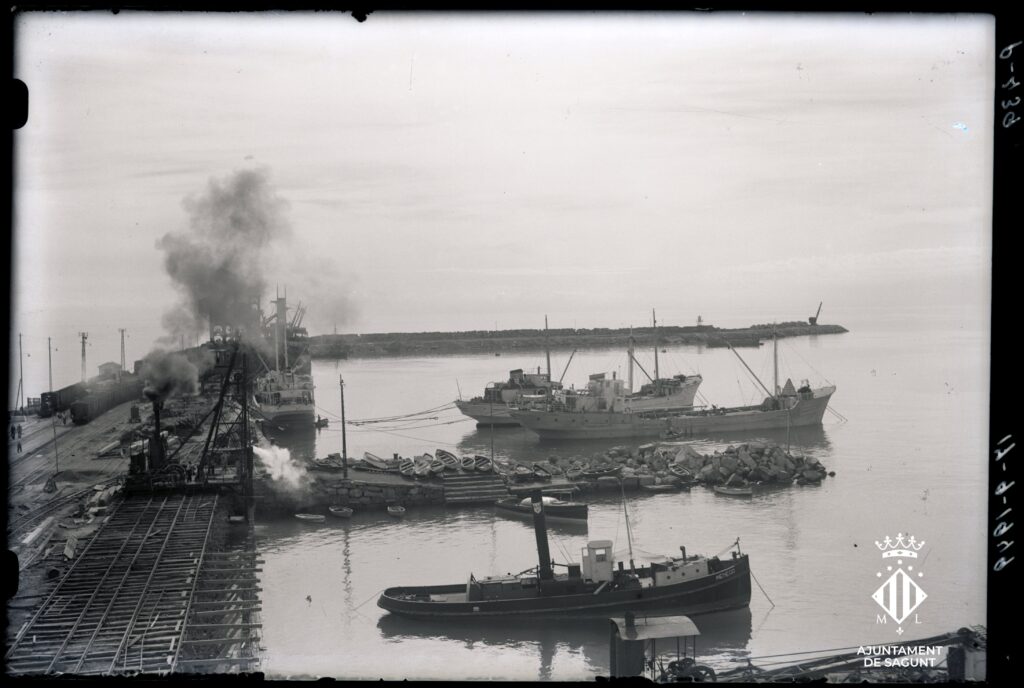
In June 1901, it was already established where the port was going to be built: “To the north of Grao de Sagunto, about eleven hundred meters north of the house on the farm known as La Vallesa, about twelve hundred meters south of the arm of the Palancia river and two thousand meters south of the river.”
On August 11, 1902, by Royal Order, authorization was granted to the Sierra Menera Mining Company to build a wharf. The port was also granted the ownerhsip of the immediately adjacent beach land, comprising of its length of 400 metres on both sides of the pier.
In April 1903, the steamboat Getso conducted the first unloading of materials destined for the construction of the mines and the railways. It took place on the beach of Sagunto with the help of the boats that arrived from Burriana.
The works began in February 1905, the original plan of which included the construction of piers with metal caissons, following the example of the West Dock of the port of Bilbao, built between 1895 and 1902.
The planned length of the dock was 659 m with a berth to accommodate a single vessel of up to 6,000 tonnes
The first 515 m of the dam were built on a slope, with a crest width of 15 m and a height of 3.60 m above sea level. To locate the first loading dock, a 128 m long and 32 m wide artificial block dock was built, equipped with electric lighting to facilitate overnight loading. 4 steam cranes and 2 electric cranes were installed on tracks along this section of the quay. The steam cranes had a 5-ton capacity with a 12-metre-long boom, while the electric cranes had a 4-ton capacity with an 11-metre-long boom.
The works were partially completed two years after they started and on 17 January 1907 the first steamboat, the Gorbea-Mendi, set sail with the first 4,200 tons of iron ore, transported from Ojos Negros by the Central Railway Company of Aragon, bound for Maryport (England).
Following the block pier, eight large reinforced concrete caissons, each being 16.20 m long, 18 m wide, 9.50 deep and weighing 5,150 tons, were built to replace the initially planned metal caissons.
The second iron ore loading dock was located on top of these caissons and consisted of a four-span 24 m long and 14 m high metal bridge. At the landside end was a double electric hoist by which the wagons were lifted up to the upper platform of the bridge, each carrying 20 tonnes of ore. At the opposite end of the bridge, there was another forklift that lowered the cars that rolled along the bridge only the action of gravity itself, thanks to the 0.6 % slopes. There were three dumps for loading the ships, with a total capacity of 800 tons of ore per hour. This second loading dock came into service on 26 March 1908 and was in operation until October 1965.
Both loading docks allowed the berthing of two steamboats of up to 8,000 tons. The draught on the quay and on the 16 hectares of the ship manoeuvring area was 30 ft, being about 9.1 m.
In 1931 another pier was built, parallel to the coast, with a length of 150 m and a typology consisting of a concrete platform supported by concrete piles. Ten 6-ton Babcock Wilcox-type electric cranes were used for its operation, which remained in service until 1984.

